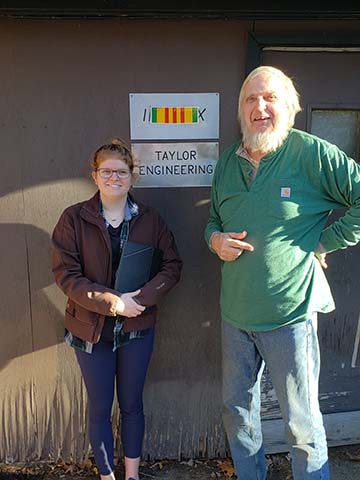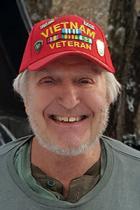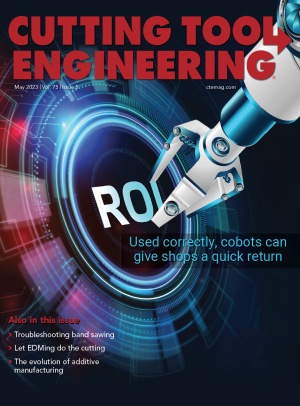The nature of work on the shop floor has evolved over the past 50 years, but the perception in the world at large of what our trade does has not kept pace. This is a disservice to bright, young talent.
Make no mistake, our trade takes talent and can reward it. When I was in high school (1962-1966), people who took shop class were the not so bright folks. If you had a brain, it was expected that you would take the college prep curriculum. At that time, before computer control, working at a machine shop meant being a human motor controller. The worker turned cranks and provided the control to guide the machining process. So I chose the college prep courses but took shop as an elective because I just liked to make things.
After high school, it was off to college for me to study mechanical engineering, but the Vietnam War intervened. When I was a junior, I quit school and went to war. After Nam, I banged around for a few years and then started a machine shop because I enjoyed getting my hands on things. I found that the shop world suited me, and I never returned to college. For me, designing a part or system is fun, but what I really like is making the actual parts.

At first, all my machines were manual. I started with the basics: a lathe, a vertical mill and a band saw. During the 1970s and ’80s, CAD, CAM and CNC became real and affordable. I purchased my first CNC machine in 1983. It was a bed mill, and I bought it because it could do circular interpolation — something impossible with a human in the control loop. This allowed me to do work that I previously could not do. AutoCAD and CAM software were part of the learning curve. People said and still say computers on the shop floor will take away jobs from people, which is true because human motor controllers are less in demand.
But what else has happened? Now machinists can control multiple machines and make many times more parts than before. During the custom motorcycle craze of about 20 years ago, I found myself running three CNC machines and
making a ton of money. Then it was just me with one human assistant to answer the phone, run errands and do light bookkeeping. I no longer had to turn cranks, but I had to program computers. I had to learn new skills as the manufacturing world evolved. The motorcycle craze ended, and my work changed into making many small lots of precision parts. Here again, my computers helped me make money. Whereas I had an inventory of paper drawings 40 years ago, today I have an inventory of computer programs.
As computers have become a fact of life in the manufacturing space, machinists have had to learn new skills to communicate with their mechanical minions and manage workflow. The machinist of today needs to understand fit and finish, feed rate and spindle speed, and metrology like the machinist of old, but computer skills also are needed. Today’s machinists are more productive, and they must know more — therefore they are worth more.
Instead of computers dumbing down the human aspect of manufacturing, they have made it more intellectually challenging. That’s a win.
Related Glossary Terms
- bandsaw blade ( band)
bandsaw blade ( band)
Endless band, normally with serrated teeth, that serves as the cutting tool for cutoff or contour band machines.
- computer numerical control ( CNC)
computer numerical control ( CNC)
Microprocessor-based controller dedicated to a machine tool that permits the creation or modification of parts. Programmed numerical control activates the machine’s servos and spindle drives and controls the various machining operations. See DNC, direct numerical control; NC, numerical control.
- computer-aided design ( CAD)
computer-aided design ( CAD)
Product-design functions performed with the help of computers and special software.
- computer-aided manufacturing ( CAM)
computer-aided manufacturing ( CAM)
Use of computers to control machining and manufacturing processes.
- feed
feed
Rate of change of position of the tool as a whole, relative to the workpiece while cutting.
- finish feed
finish feed
Feeding in small increments for finishing the part.
- interpolation
interpolation
Process of generating a sufficient number of positioning commands for the servomotors driving the machine tool so the path of the tool closely approximates the ideal path. See CNC, computer numerical control; NC, numerical control.
- lathe
lathe
Turning machine capable of sawing, milling, grinding, gear-cutting, drilling, reaming, boring, threading, facing, chamfering, grooving, knurling, spinning, parting, necking, taper-cutting, and cam- and eccentric-cutting, as well as step- and straight-turning. Comes in a variety of forms, ranging from manual to semiautomatic to fully automatic, with major types being engine lathes, turning and contouring lathes, turret lathes and numerical-control lathes. The engine lathe consists of a headstock and spindle, tailstock, bed, carriage (complete with apron) and cross slides. Features include gear- (speed) and feed-selector levers, toolpost, compound rest, lead screw and reversing lead screw, threading dial and rapid-traverse lever. Special lathe types include through-the-spindle, camshaft and crankshaft, brake drum and rotor, spinning and gun-barrel machines. Toolroom and bench lathes are used for precision work; the former for tool-and-die work and similar tasks, the latter for small workpieces (instruments, watches), normally without a power feed. Models are typically designated according to their “swing,” or the largest-diameter workpiece that can be rotated; bed length, or the distance between centers; and horsepower generated. See turning machine.
- metrology
metrology
Science of measurement; the principles on which precision machining, quality control and inspection are based. See precision machining, measurement.
- milling machine ( mill)
milling machine ( mill)
Runs endmills and arbor-mounted milling cutters. Features include a head with a spindle that drives the cutters; a column, knee and table that provide motion in the three Cartesian axes; and a base that supports the components and houses the cutting-fluid pump and reservoir. The work is mounted on the table and fed into the rotating cutter or endmill to accomplish the milling steps; vertical milling machines also feed endmills into the work by means of a spindle-mounted quill. Models range from small manual machines to big bed-type and duplex mills. All take one of three basic forms: vertical, horizontal or convertible horizontal/vertical. Vertical machines may be knee-type (the table is mounted on a knee that can be elevated) or bed-type (the table is securely supported and only moves horizontally). In general, horizontal machines are bigger and more powerful, while vertical machines are lighter but more versatile and easier to set up and operate.
- sawing machine ( saw)
sawing machine ( saw)
Machine designed to use a serrated-tooth blade to cut metal or other material. Comes in a wide variety of styles but takes one of four basic forms: hacksaw (a simple, rugged machine that uses a reciprocating motion to part metal or other material); cold or circular saw (powers a circular blade that cuts structural materials); bandsaw (runs an endless band; the two basic types are cutoff and contour band machines, which cut intricate contours and shapes); and abrasive cutoff saw (similar in appearance to the cold saw, but uses an abrasive disc that rotates at high speeds rather than a blade with serrated teeth).


